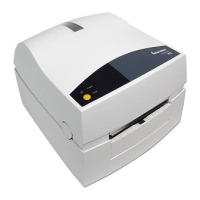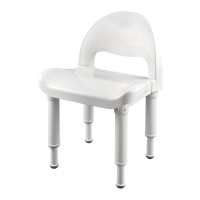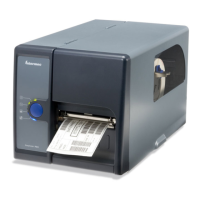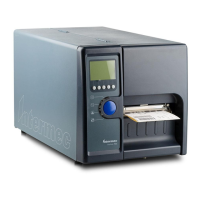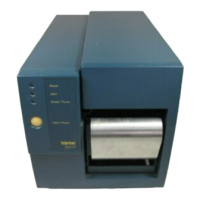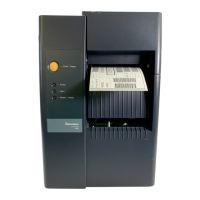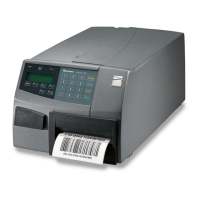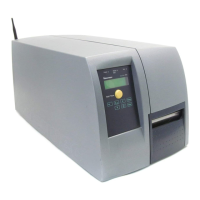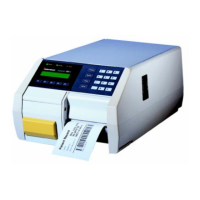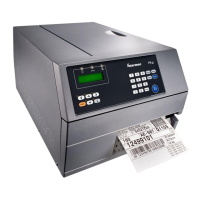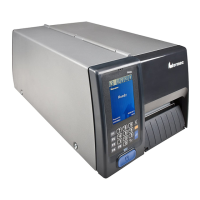Intermec EasyCoder ESim v4.00—Programmer’s Reference Manual 45
Chapter 7—Commands
C – Counter
Description This command is used to defi ne one of max. 10 automatic
counters used in consecutive numbering applications, for
example serial numbers. Counters can only be used in the Form
Edit Mode, not in the Direct Mode.
Syntax Cp
1
,p
2
,p
3
,p
4
,"PROMPT"
Parameters p
1
Counter number (0-9).
p
2
Maximum number of digits for the counter (1-29).
p
3
Field justifi cation:
L Left justifi cation.
R Right justifi cation.
C Center justifi cation.
N No justifi cation.
p
4
Step value. Plus or minus sign followed by a single digit (1-9):
+ Incrementation.
- Decrementation.
[-] A single leading minus sign in the prompt fi eld will cause the prompt to
be sent one time only after the form is retrieved (Keyboard Display Unit
only, see below).
[- -] A double leading minus sign in the prompt fi eld will cause the prompt to
be suppressed (Keyboard Display Unit only, see below).
"PROMPT" An ASCII text fi eld that will be transmitted to the Keyboard Display Unit or host
via the serial interface each time a form containing this command is retrieved.
It usually requests the operator to enter the starting value for the counter.
Remarks This command is used in forms that require sequential
numbering. When initializing counters, they must be defi ned in
order (for example C0, C1, C2, etc.) after possible variables.
To print the contents of the counter, the counter number (C0-
C9) is entered in the "DATA" fi eld of A (Print Text) or B (Print
Bar Code) commands.
Prompts will only be displayed if a UI command has been issued
after last power-up. The Keyboard Display Unit sends the UI
command automatically.
The fi eld justifi cation parameter (p
3
) affects the way the counter
will be printed. When p
3
= L, R, or C, the counter value will
be printed left, right or center justifi ed in an area with a width
defi ned by p
2
(number of digits). If no justifi cation is selected
(p
3
= N), the fi eld will truncated from the right side so as to not
exceed the set maximum fi eld length, which may be useful when
using a counter as input data to a bar code.
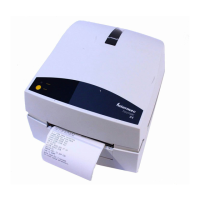
